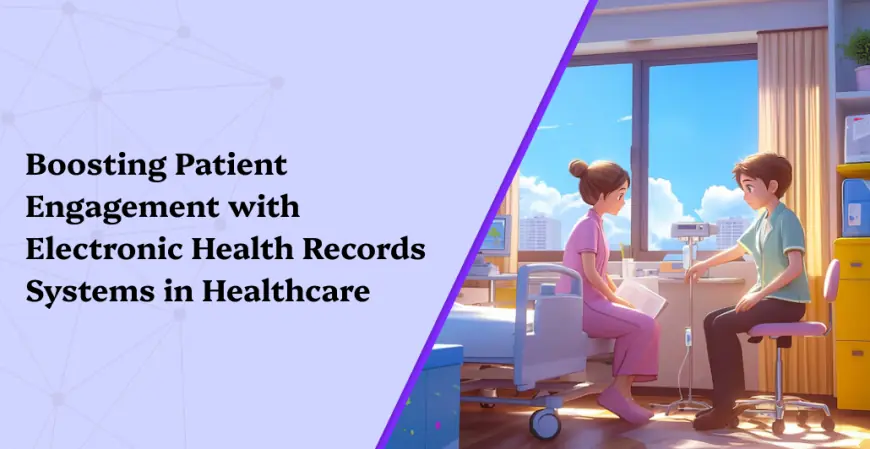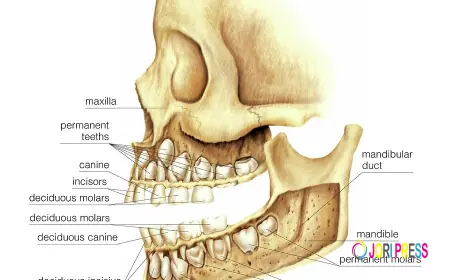Boosting Patient Engagement with Electronic Health Records Systems in Healthcare
Boost patient engagement in healthcare using Electronic Health Records systems for better access, care, and communication.

Increasing patient interaction with Electronic Health Records Systems is revolutionizing the health care industry by making it easy to access the medical data and utilize it. With improvement in EMR software, now the patients can talk to their health records, book an appointment, and interact with physicians in an easy process. In EHR software India, the systems are designed to increase the provision of care, transparency, and individualized treatment plans. Closing the loop between providers and patients, EHRs are creating better results and empowering individuals in owning their health.
What Are Electronic Health Records Systems?
Electronic Health Records Systems (EHRs) are computerized representations of a patient's history of health that is accumulated over time by healthcare professionals. The systems store pertinent health information such as diagnoses, medications, and care plans, allergies, immunization dates, and laboratory tests. Contrary to paper records, the electronic health record system software keeps information up to date in point in time and allows authorized persons to access information remotely from various healthcare settings.
Top-tier EHR computer programs are designed to automate clinical workflow procedures, enhance the precision of data, and enable enhanced medical care coordination among providers. Other technological innovations in EHR program development also seek to enhance user interfaces, mobile apps, patient portals, and integration with other healthcare technology. Enhanced patient engagement is one of the greatest advantages of EHR systems.
By giving patients access to their records, EHRs allow them to play an active role in their care, make it easy to schedule appointments, and enhance communication with providers. They decrease medical errors, support clinical decision-making, and enhance overall efficiency. As the health care industry rapidly becomes electronic, use of fully functional electronic health record systems is more vital in providing quality, patient-centered care and better long-term health outcomes.
Benefits of EHRs for Patient Engagement
Electronic Health Records (EHRs) form the core of transforming the way patients engage with their health care providers. Perhaps the best feature of EHR systems is that they empower the patients by providing them with direct access to their medical history, lab results, prescriptions, and schedule of appointments. It creates a sense of ownership and investment in the care process of patients and ultimately delivers better outcomes.
Advanced EHR systems facilitate improved communication between the patients and providers in the form of secure messaging, automated reminders, and patient portals. These make it simpler for questioning by the patients, follow-up on care, and obtaining updates without an office visit. With real-time access to health information, EHRs make it simpler for patients to stay informed, comprehend diagnosis, and stick to treatment plans. In India EHR Software, numerous systems have been developed to satisfy the needs of Indian healthcare providers and patients.
These systems should be affordable, mobile-enabled, and scalable across different sizes of hospitals. With India's progress toward healthcare infrastructure digitization, the advantages of adopting EHR become apparent greater patient satisfaction, minimized administrative labor, and improved clinical productivity. EHRs are the driving force for building an engaged, educated, and healthier patient population in the end.
EHR Features That Encourage Patient Involvement
Today's Electronic Health Record (EHR) systems are not just for clinical documentation, but also to engage patients themselves in the healthcare process. Such systems have many features which increase transparency, improve communication, and strengthen the relationship of confidence between physicians and patients.
The most powerful tool is the patient portal from which users can access their medical record, lab reports, and medication at any time safely. Using this facility, patients can read doctor's notes, print documents, and comprehend their disease more precisely, promoting active care. Best Electronic Health Records software also comprises appointment scheduling capabilities, drug reminders, and bill transparency enabling patients to conduct health activities conveniently at their own pace.
Secure messaging is also a robust feature, supporting real-time communication with medical staff for follow-up, inquiry, or validation of treatment plans. With continued advancement of the EHR software, mobile and wearable integration has also caused the access to be smoother to enable patients to view vitals, monitor progress, and gain personalized care insights.
EMR software development in the Indian healthcare market emphasizes affordability and flexibility, providing user-friendly solutions in urban as well as rural areas. EHR software development has grown, and so has easier availability of these features, enabling patients to be active participants in their own healthcare decision-making and ultimately to improved outcomes.
Challenges in Implementing EHRs for Engagement
Despite the organization's Benefits Of EHR systems towards more patient engagement being vast, there are some limitations which inhibit efficient use. One such limitation is the simplicity of electronic health record system software, which is prone to alteration with the need for massive training for physicians and patients. Not everyone who operates them is a computer mastermind, and their acquisition becomes a hassle, particularly in financially struggling institutions.
Data security and privacy is another issue. The patients might not like digital platforms due to fear that their confidential health information may be manipulated or exploited by others without their knowledge. Data protection rules non-compliance is a source of high concern in order to maintain their trust.
From infrastructure perspectives, most of the health centers particularly rural and semi-urban centers in India are not yet fitted with the digital preparedness it needs for smooth EHR uptake. Though India-specific EHR software is evolving to address localized requirements, lack of internet connectivity and smart devices act as obstacles.
Developmentally, EMR software development has to pay close attention to user interfaces and localizations to accommodate various linguistic and demographic groups. Unless proper consideration and planning are provided at the design and implementation phases, EHR systems' latent engagement advantage cannot be used effectively and therefore the overall impact on healthcare performance is reduced.
Conclusion
Patient activation via Electronic Medical Records System is the key to providing personalized, effective, and transparent care. With the technological advancements in EMR software and increased popularity of EHR software among Indian physicians, patients are now more capable than ever of taking an active role in controlling their own care. With their blend of ease of use, access security, and real-time communication, EHRs bring an integrated healthcare system that generates outstanding results and patient satisfaction.
What's Your Reaction?
 Like
0
Like
0
 Dislike
0
Dislike
0
 Love
0
Love
0
 Funny
0
Funny
0
 Angry
0
Angry
0
 Sad
0
Sad
0
 Wow
0
Wow
0

















































